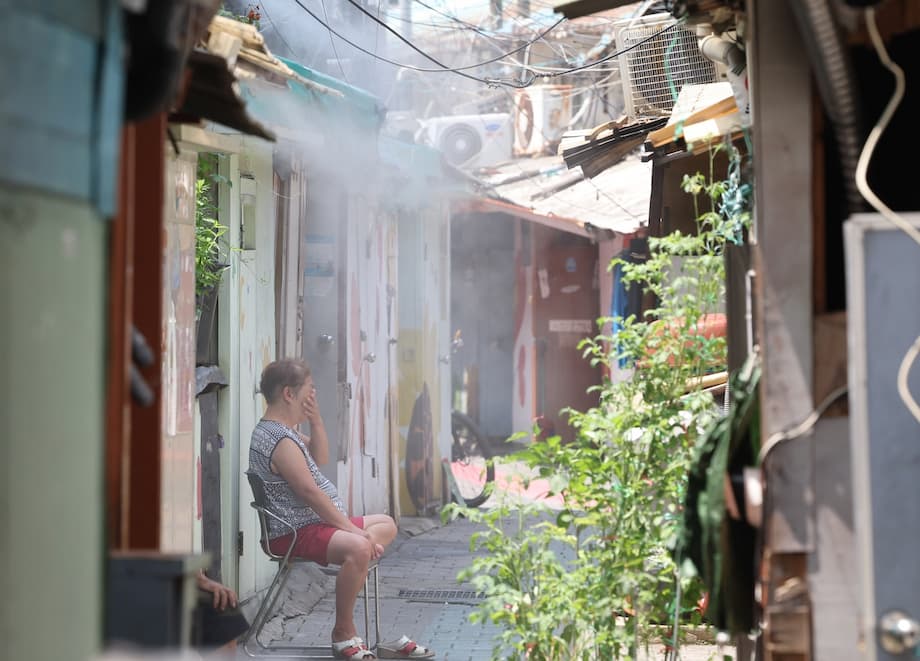South Korea’s Solo Living Boom: A Demographic Milestone
South Korea has crossed a historic threshold: for the first time, more than 10 million people in the country are living alone. This surge in single-person households, now accounting for over 42 percent of all households, marks a profound transformation in the nation’s social fabric, economy, and urban landscape. The trend is driven by a complex interplay of aging, shifting cultural norms, economic pressures, and changing aspirations among both the young and elderly.
- South Korea’s Solo Living Boom: A Demographic Milestone
- Why Are More Koreans Living Alone?
- Economic and Social Impacts: From Real Estate to Retail
- Social Isolation and Mental Health: The Hidden Costs
- Environmental Implications: More Households, More Emissions
- Global and Regional Context: South Korea in the World
- Policy Responses and the Road to Adaptation
- In Summary
According to the Ministry of Interior and Safety, South Korea’s registered population stood at 51.2 million at the end of 2024, down from 51.8 million in 2020. While the population decline has slowed, the number of people living alone has soared—from about 9 million in 2020 to 10.1 million in 2024. This demographic shift is not just a statistical curiosity; it is reshaping everything from housing markets to mental health policy, and it raises urgent questions about the future of Korean society.
Why Are More Koreans Living Alone?
The rise in single-person households is the result of several converging trends. The most significant drivers are:
- Aging Population: South Korea is one of the world’s fastest-aging societies. Out of 5.65 million households with members aged 65 and above, 2.13 million seniors now live alone—a 37.8 percent increase from just a year earlier. Many elderly Koreans find themselves living solo due to the death of a spouse or the migration of children to urban centers.
- Changing Youth Attitudes: Traditionally, moving out of the parental home was closely linked to marriage. Today, many young Koreans in their 20s and 30s see solo living as a rite of independence, often delaying marriage or forgoing it altogether. Of the 10 million single-person households, 3.2 million are people in their 20s and 30s.
- Economic Pressures: High housing costs, job market instability, and the rising cost of living make it difficult for young people to start families. Many choose to live alone to focus on careers or personal growth.
- Declining Birth and Marriage Rates: South Korea’s fertility rate remains among the lowest in the world, despite a slight uptick in 2023. Fewer marriages and fewer children mean more people living alone, especially as the population ages.
These factors have combined to make single-person households the largest household type in South Korea, surpassing two-, three-, and four-person households. The gender split is nearly even, with males accounting for 50.1 percent and females for 49.9 percent of solo dwellers.
Regional and Historical Context
The trend is especially pronounced in urban areas. Nearly half of all single-person households are concentrated in the Seoul metropolitan area, reflecting the city’s role as a magnet for young professionals and retirees alike. In Seoul, the share of one-person households jumped from 29.5 percent in 2015 to 39.3 percent in 2023.
Historically, the proportion of Koreans living alone has risen dramatically—from just 7 percent in 1985 to 24 percent in 2010, and now over 42 percent. This mirrors global trends, as household sizes shrink worldwide due to declining fertility and changing family structures. Yet, the pace and scale of change in South Korea are particularly striking.
Economic and Social Impacts: From Real Estate to Retail
The solo living boom is reshaping South Korea’s economy in visible and subtle ways. The most immediate impact is on the housing market. Demand for smaller apartments, rental units, and mixed-use buildings (known as officetels) is soaring. Real estate developers and global investors are taking notice. Companies like The Living Company and Greystar Real Estate Partners have launched major investments in Korea, betting on long-term demand for compact, professionally managed rental homes with amenities tailored to singles.
This shift is moving the market away from the traditional build-to-sell model toward build-to-rent, a model common in the United States and Europe but still new in Korea. The influx of foreign capital—such as the Canada Pension Plan Investment Board’s joint venture with a Korean developer—signals confidence in the sector’s growth potential. However, strict tenancy regulations, such as rent caps, may limit flexibility and returns for operators.
The economic effects extend beyond real estate. Consumption patterns are changing as more people live alone. Single-person households tend to spend differently, prioritizing convenience foods, dining out, leisure, and personal care. Yet, overall consumption growth is slowing. The Bank of Korea estimates that the aging population and rise in solo living are reducing annual consumption growth by about 1 percent. Older adults, who make up a growing share of single-person households, tend to save more and spend less, especially as they prepare for retirement.
Meanwhile, younger Koreans are spending less on big-ticket items like education and home furnishings, reflecting delayed marriage and childbearing. The Korea Chamber of Commerce and Industry warns that unless consumer confidence recovers, the country could face a prolonged consumption slump, regardless of income growth or demographic policy.
Social Isolation and Mental Health: The Hidden Costs
While living alone can offer independence and personal freedom, it also brings risks of loneliness, depression, and social isolation. A 2022 survey found that 62 percent of single-person households in South Korea experienced loneliness. In 2023, over 3,600 cases of so-called “lonely deaths”—people dying alone and unnoticed—were recorded.
Experts warn that the mental health challenges associated with solo living are likely to deepen as the trend continues. The elderly are particularly vulnerable, but young people are not immune. High living costs and job insecurity can exacerbate feelings of isolation among young solo dwellers.
In response, the Seoul city government has launched the “Loneliness-Free Seoul” initiative, a five-year plan to combat social isolation. The program includes community-building activities, mental health support, and financial aid for isolated youths. National policymakers are also expanding parental leave, increasing tax support for family-friendly companies, and encouraging work-life balance to address the broader demographic crisis.
Dr. Kim Eun-jung, a sociologist at Seoul National University, explains:
“The rise in single-person households is not just a matter of numbers. It reflects deep changes in how Koreans view family, work, and personal fulfillment. But as more people live alone, we must rethink our social safety nets and community support systems.”
Environmental Implications: More Households, More Emissions
The growth in single-person households also has environmental consequences. Smaller households tend to use more energy per person, as appliances and heating are not shared. A recent study found that the rapid increase in single- and two-person households accounted for about 81 percent of the rise in greenhouse gas emissions from residential buildings in South Korea between 2015 and 2023. While technological advances have offset some of this impact, the trend poses challenges for the country’s carbon neutrality goals.
Policymakers are now considering targeted energy conservation and carbon reduction strategies that reflect the new household structure. These may include incentives for energy-efficient appliances, shared facilities in apartment complexes, and urban planning that encourages community living without sacrificing privacy.
Global and Regional Context: South Korea in the World
South Korea’s demographic transformation is part of a broader pattern seen across East Asia and advanced economies worldwide. Countries like Japan, Taiwan, and China are also grappling with aging populations, low fertility, and shrinking household sizes. However, South Korea’s pace of change is among the fastest, and its cultural context—where family ties and intergenerational living have long been prized—makes the shift especially significant.
International comparisons show that while household sizes are shrinking globally, the composition of households remains diverse. In Denmark, for example, the average household size is just 1.8, while in Senegal it is 8.4. South Korea’s experience highlights the unique challenges faced by societies with rapidly aging populations and persistent gender and economic inequalities.
At a recent Asia Society Policy Institute roundtable, experts noted:
“Population decline and low fertility rates are not due to unwillingness to marry, but to significant challenges in committing to marriage and starting a family. Lower-income men and highly educated women are most affected, leading to more single-person households.”
Policy Responses and the Road to Adaptation
South Korea’s government is responding to the demographic crisis with a mix of financial incentives, regulatory reforms, and social programs. President Yoon Suk Yeol has proposed a new ministry dedicated to demographic issues, with a focus on not just financial support and childcare, but also on changing workplace and cultural attitudes. Expanded parental leave for men, tax breaks for family-friendly companies, and efforts to promote work-life balance are all on the agenda.
Experts argue that policies must go beyond traditional family-centered support. Tailored mental health and community programs for solo households—both elderly and young—are essential. There is also growing recognition of the need to address gender inequality, support for multicultural families, and the integration of foreign workers to stabilize the population.
The Catholic Church and other community organizations are stepping in to provide social support, organizing events for large families and offering programs to help individuals living alone develop interpersonal relationships and a sense of community.
Challenges Ahead
Despite these efforts, the challenges are formidable. Without stronger mental health and social support networks, the risks of isolation and loneliness will grow. Economic pressures, especially high housing costs and job insecurity, continue to deter young people from starting families. And while the fertility rate saw a rare increase in 2023, it remains far below the level needed to sustain the population in the long term.
Some experts suggest that rather than trying to reverse population decline, South Korea should adapt to the new reality—investing in young professionals, encouraging seniors to remain active in the workforce, and embracing immigration as a way to maintain economic vitality.
In Summary
- South Korea has surpassed 10 million single-person households, now making up over 42 percent of all households.
- The trend is driven by an aging population, changing youth attitudes, economic pressures, and declining birth and marriage rates.
- Solo living is reshaping the housing market, with rising demand for small apartments and rental units attracting global investors.
- Consumption growth is slowing as more people live alone, with older adults saving more and younger people delaying major purchases.
- Social isolation and mental health challenges are growing concerns, prompting new government and community initiatives.
- The environmental impact of more, smaller households includes increased energy use and greenhouse gas emissions.
- Policy responses include financial incentives, expanded social programs, and efforts to address gender and generational inequalities.
- Experts argue that adaptation, rather than reversal, may be the most realistic path forward for South Korea’s rapidly changing society.




